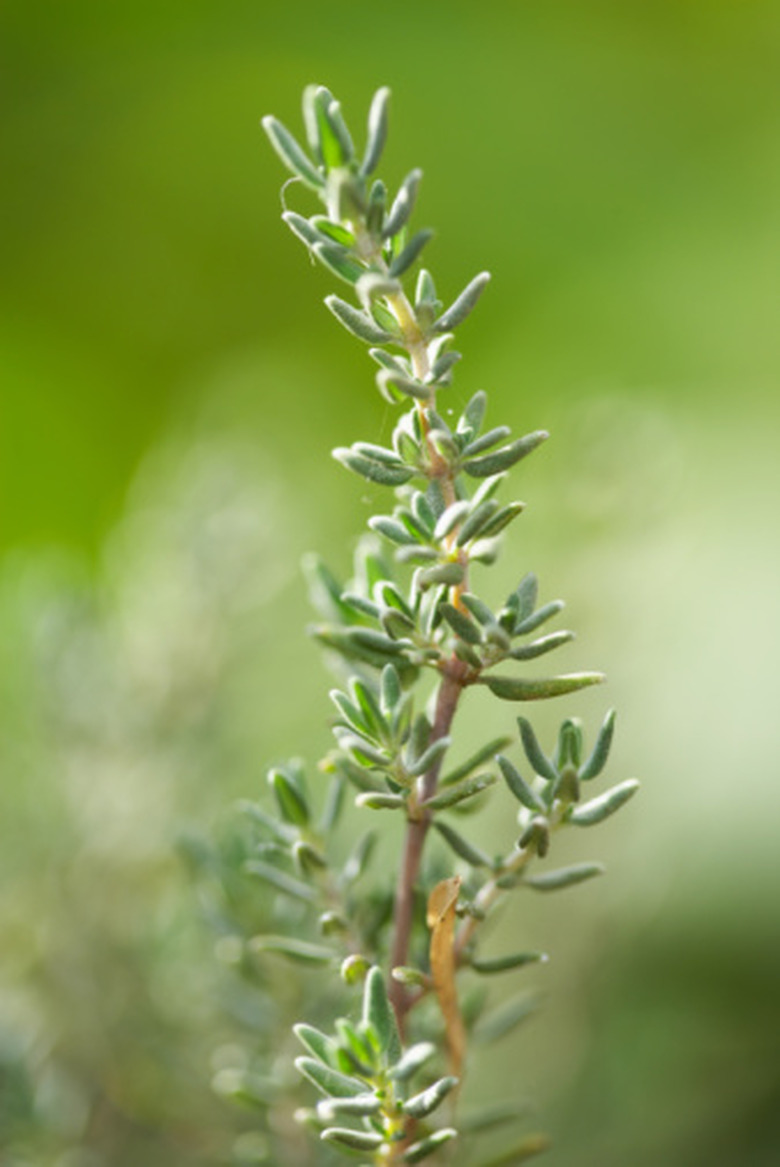Why Do My Sedum Plants Collapse In The Middle?
Although sedums are hardy plants that grow in even harsh conditions with little care, they often become floppy and collapse in the center. Floppiness is especially a problem with tall sedum varieties such as "Autumn Joy," "Black Jack" and "Autumn Fire. A few minutes of routine maintenance keeps sedums bushy and upright.
Causes
Floppiness is normal for tall sedum varieties that aren't routinely pruned; the plant eventually becomes top heavy and collapses under the weight of the blooms. Lack of sunlight and too much fertility in the soil are also common causes of floppiness and caving in at the center of the plant. Sedum is a warm-weather succulent plant that thrives in full sunlight and average or poor soil. Some sedum varieties are tough enough to thrive in dry, gravelly soil.
- Although sedums are hardy plants that grow in even harsh conditions with little care, they often become floppy and collapse in the center.
- Some sedum varieties are tough enough to thrive in dry, gravelly soil.
Pinching
Pinching is a simple method of promoting compact, sturdy, bushy growth on new sedum plants. Pinch the growing tips of young plants when they are about 6 to 8 inches tall. Pinching causes a slight delay in blooming, but the result will be more blooms and healthier plants.
Pruning
While it seems extreme, a good pruning is the best solution for a tall, lanky sedum. If your plants are beginning to look tipsy in late spring or early summer, use your garden shears or clippers to cut the plants to a height of about 6 to 8 inches. The plants may initially look like victims of a bad haircut, but they will soon rebound and look better than ever. Pruning can safely be done every year if needed and is especially effective for sedums grown in shade.
- Pinching is a simple method of promoting compact, sturdy, bushy growth on new sedum plants.
- The plants may initially look like victims of a bad haircut, but they will soon rebound and look better than ever.
Division
Division is the best fix for an older sedum, especially if the center of the plant looks like it's dying down and becoming woody and unattractive. To divide sedum, dig up the entire plant. Pull the plant apart into smaller plants, each with several healthy roots. If a plant is too large to dig, use a trowel or shovel to cut a section from the side of the plant. Division is a good opportunity to move the sedum to a spot in full sunlight and to discard old, woody sections. To keep sedum healthy, get in the habit of routinely dividing the plant every other year.
Tips
Water sedum sparingly; wet soil may cause sedum to rot and die. In most parts of the country, sedum thrives with no supplemental irrigation but benefits from an occasional light watering during long periods of hot, dry weather. Don't fertilize sedum; fertilizer contributes to rich soil, which can cause floppiness and weak growth.
- Division is the best fix for an older sedum, especially if the center of the plant looks like it's dying down and becoming woody and unattractive.
- Division is a good opportunity to move the sedum to a spot in full sunlight and to discard old, woody sections.
References
- University of Illinois Extension; Edible; June 2007
- University of Illinois Extension; Pinching and Pruning – A Perennial Primer; Sandra Mason; April 2006
- University of Nebraska Extension; Perennial Plants for Nebraska – Showy Sedum; 2010
- PennLive.com; How to Prevent Floppy Sedums; George Weigel; November 2006
